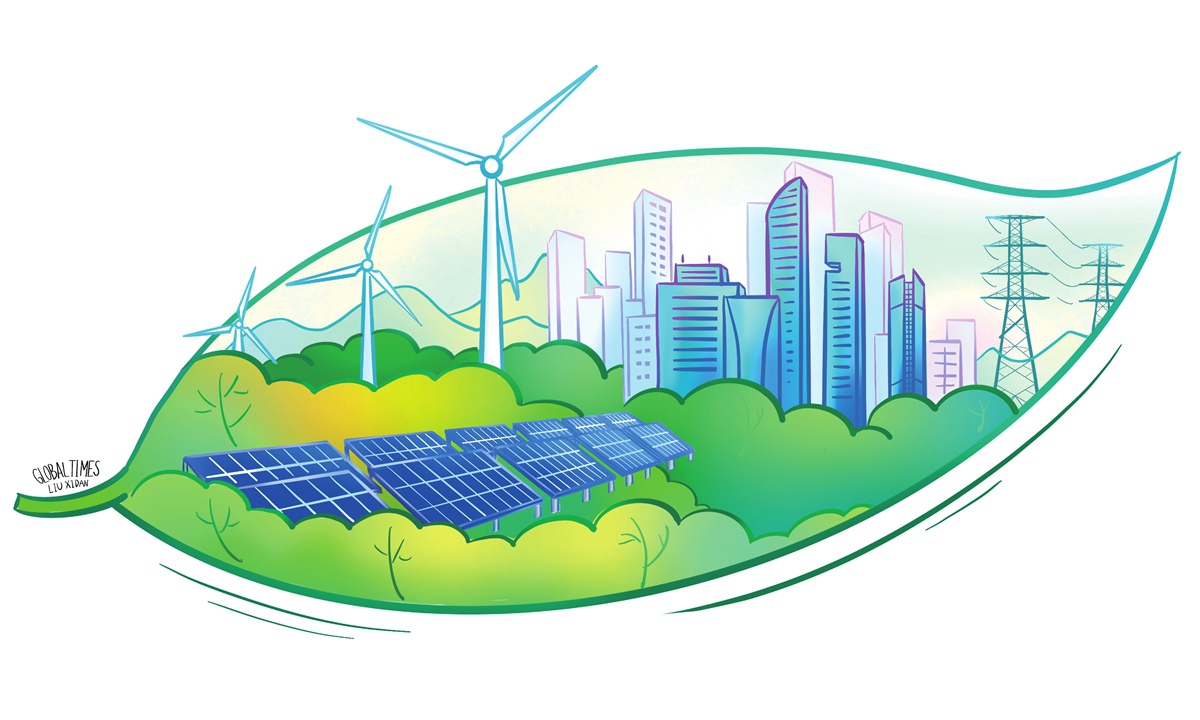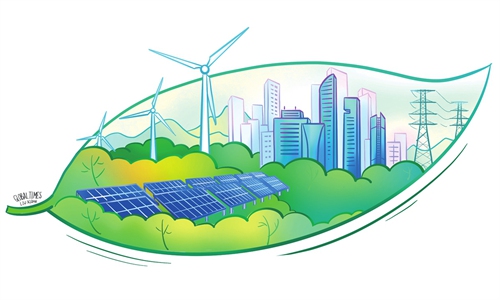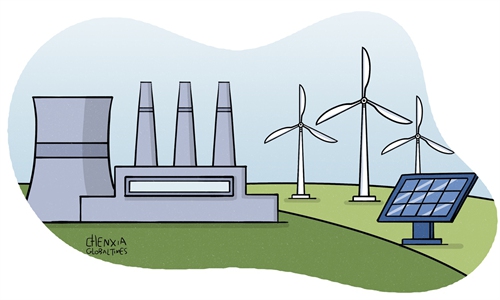
Illustration: Liu Xidan/GT
China's energy consumption and utilization of renewable energy are driving significant shifts in the global energy landscape, highlighting both advances and challenges in the country's energy usage and climate change initiatives.According to a Bloomberg report on Thursday, China surpassed Europe in per capita energy use for the first time last year, with the country ramping up coal-fired generation while adding more renewable capacity than the rest of the world combined.
Several factors are propelling the growth of China's energy consumption. For starters, the rise in per capita energy usage is a clear reflection of the improved living standards in China. The rapid economic expansion has led to an increased demand for energy, evident in daily life. This shift is a direct consequence of China's societal advances and enhanced living conditions, serving as an important symbol of China's economic development.
Also, as the world's manufacturing hub, China plays a crucial role in global supply and industrial chains. With the steady rise of China's economy and expanding production scale, it is natural to see an increase in energy consumption alongside the country's economic growth.
In the context of globalization, China's production caters to domestic needs but also supports the development of the global economy.
Against this backdrop, the development of the renewable energy sector is of paramount importance for supporting China's growing energy needs. In recent years, China has witnessed continuous increases in its wind, hydropower, nuclear power and solar power generation capacity. In the first quarter of this year, China's newly installed renewable energy capacity reached 1.59 billion kilowatts, up 26 percent year-on-year and accounting for about 52.9 percent of China's total installed capacity.
Moreover, China is set to exceed its 2030 wind and solar power target of 1,200 gigawatts by six years with projections of up to 2,400 gW by 2030, according to Caixin, citing experts from the International Energy Agency.
Lauri Myllyvirta, senior fellow at the Asia Society Policy Institute, said in a recent report on Carbon Brief, a UK-based website covering climate science, climate policy and energy policy, that as record wind and solar installations met nearly all of China's increased demand for power, China may have already peaked emissions in 2023, more than half a decade before its own deadline of 2030.
All these developments not only showcase China's innovation capability and technological progress in the new-energy sector but also underscore its commitment to promoting the energy structure transformation and achieving sustainable development.
However, despite China's impressive strides in renewable energy, its efforts to combat climate change are far from over. China still faces serious challenges in terms of both energy supply and climate change.
The significant amount of conventional power generation presents great technical challenges and economic hurdles during the green transition process. China must decrease its dependence on fossil fuel sources like coal while ensuring a steady energy supply. This will necessitate extensive technical upgrades, equipment replacements and infrastructure development, all of which require substantial financial investments and long-term planning.
Additionally, the unpredictability and intermittency of renewable energy sources pose further obstacles in the transition. Wind and solar energy are influenced by weather patterns and seasonal variations, highlighting the need for technological advances and smart grid solutions to guarantee a stable and reliable power supply.
All of these considerations require China to intensify its efforts in technology innovation, industrial restructuring and transforming the energy consumption model. By fostering technological innovation, energy efficiency can be enhanced, energy consumption can be minimized and the development of new clean energy sources can be accelerated, thereby mitigating the impact on the environment.



